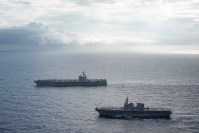Ships and aircraft from the USS Ronald Reagan (CVN 76) Carrier Strike Group (CSG) 5 and Japan Maritime Self-Defense Force (JMSDF) conducted integrated operations that concluded May 29. In addition to aircraft carrier Ronald Reagan, CSG 5 consists of aircraft from the embarked Carrier Air Wing (CVW) 5, the Ticonderoga-class guided-missile cruiser USS Shiloh (CG 67), the Henry J. Kaiser-class underway replenishment oiler USNS Pecos (T-AO 197), and the Lewis and Clark-class dry cargo ship USNS Charles Drew. CSG 5 operated in international waters with JMSDF’s Hyuga-class helicopter destroyer JS Ise (DDH 182) to exercise maritime maneuvers, strengthen the U.S.-Japan alliance, and improve regional security. Routinely the Ronald Reagan CSG conducts a multitude of high-end warfighting exercises with JMSDF.
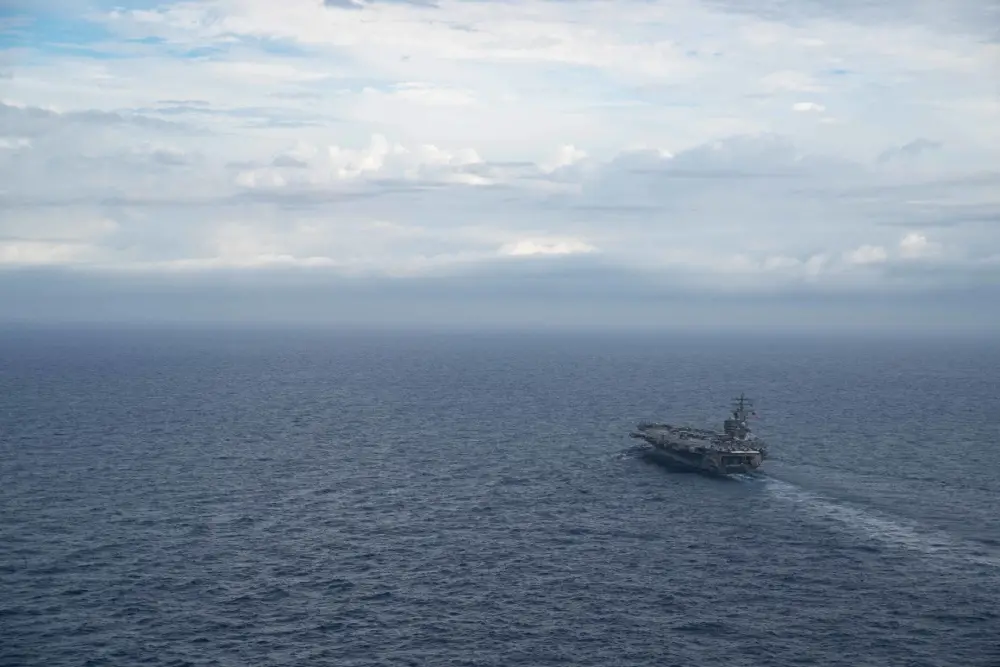
We greatly value any opportunity to work alongside our Japanese partners and exercise our ability to operate seamlessly together,” said Capt. Fred Goldhammer, commanding officer, USS Ronald Reagan. “Our forward-deployed presence in this region not only provides strategic reassurance for our allies and partners, but also allows us to consistently demonstrate our shared values that are centered on the principles of regional stability and freedom of navigation.”
“Operating at sea with our allies in the JMSDF ensures we can face a range of maritime challenges together, now and in the future,” said Rear Adm. Will Pennington, commander, Task Force 70, Carrier Strike Group (CSG) 5. “These operations have engaged our whole strike group and given our respective teams renewed confidence to meet our missions across the region.”
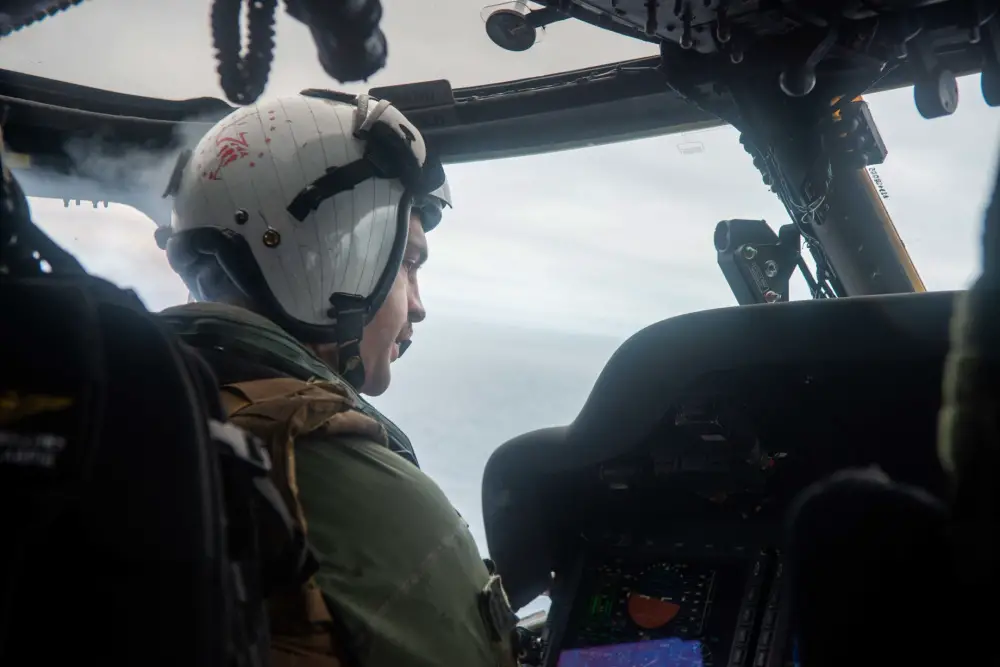
The strike group performed a publication exercise (PUB-EX), during which the watch standers of each ship quizzed each other on tactical and technical literature, and an anti-submarine warfare exercise involving a simulated contact. Shiloh and Japanese Ship Ise also performed cross-deck operations, exchanging helicopters between their flight decks, further demonstrating the compatibility of the two nations working alongside each other. The U.S. Navy strives to take a cooperative approach to regional security and stability. The United States remains committed to protecting the rights, freedoms, and lawful uses of the sea, and the ability of all countries to exercise those rights. Together, the U.S. and its allies promote peace and prosperity by supporting international norms.
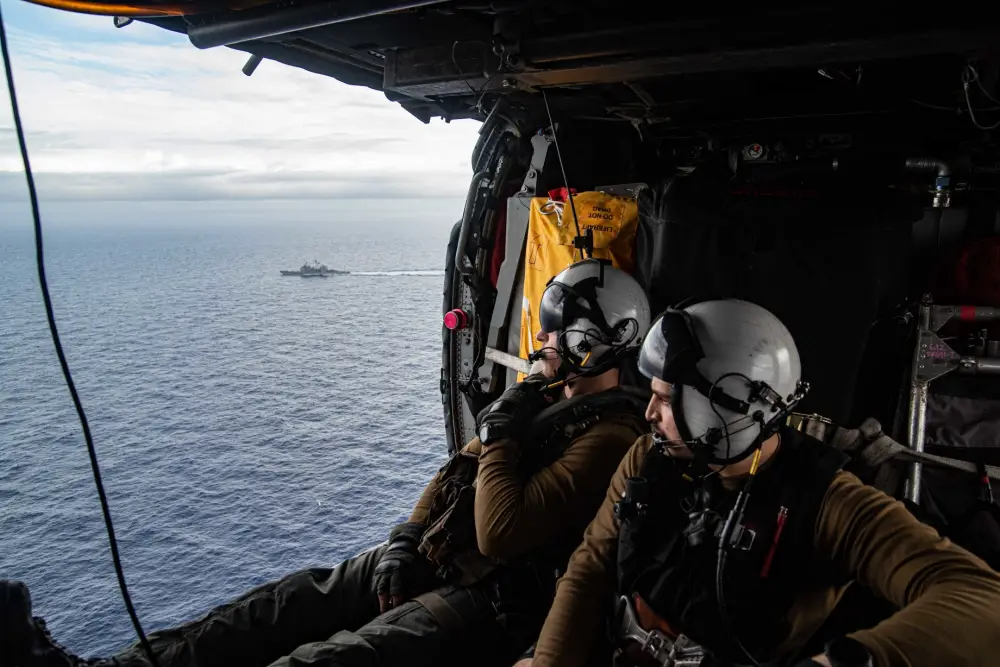
“JS Ise has successfully improved the tactical skills and interoperability with the U.S. Navy. In particular, we confirmed our strong relationship and strengthened Japan-US alliance capabilities for deterrence and effective response to various contingencies,” said Capt. Miyazaki Koji, commanding officer, JS Ise. “Despite COVID-19, the JMSDF will maintain readiness with every measures possible, and work together with the U.S. Navy for the peace and stability in Japan and its surrounding waters to realize a “Free and Open Indo-Pacific.
“Operating with our JMSDF allies is always a pleasure and sustains our alliance and long history of training and sailing together to maintain regional peace and adherence to international law,” said Capt. Sharif Calfee, commanding officer, USS Shiloh. “The importance of this alliance is continually growing as we face new and dynamic challenges in the Indo-Pacific for the benefit of both nations.”
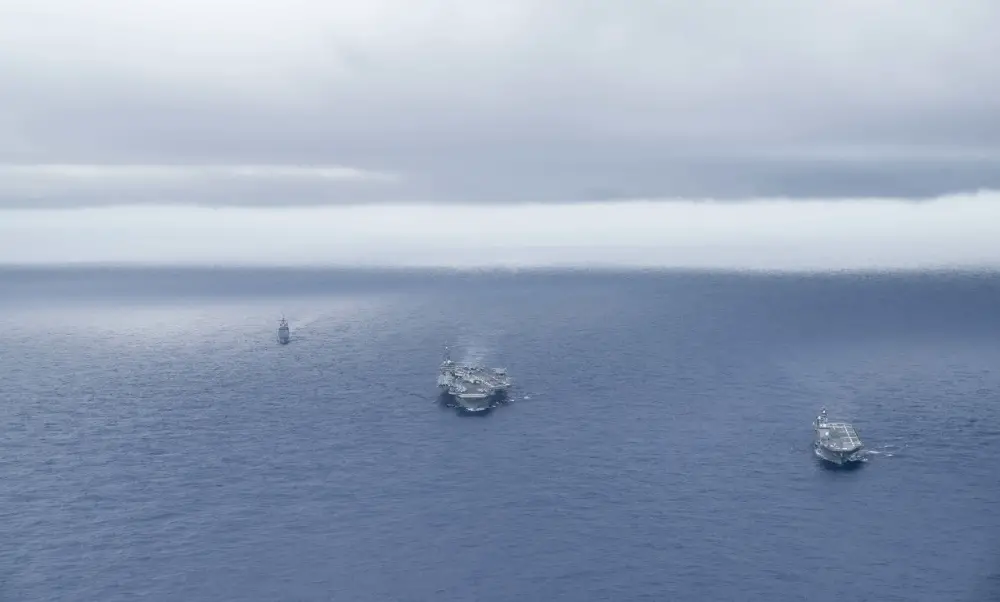
CSG 5 is deployed to the U.S. 7th Fleet area of operations in support of security and stability in the Indo-Pacific. U.S. 7th Fleet is the largest numbered fleet in the world, and with the help of 35 other maritime-nation allies and partners, the U.S. Navy has operated in the Indo-Pacific region for more than 70 years, providing credible, ready forces to help preserve peace and prevent conflict. The squadrons that make up CVW-5 are the Strike Fighter Squadrons (VFA) 102, VFA-27, VFA-115, VFA-195, Electronic Attack Squadron (VAQ) 141, Fleet Logistics Support Squadron (VRC) 30, Helicopter Maritime Strike Squadron (HSM) 77, Helicopter Sea Combat Squadron (HSC) 12 and Early Warning Squadron (VAW) 125. During their 2020 deployment the Air Wing executed over 3,400 sorties and 11,000 flight hours while maintaining full combat readiness.
